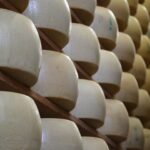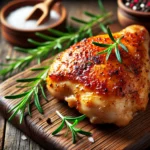There’s a reason people obsess over burgers. They’re simple, satisfying, and nostalgic — but also surprisingly easy to screw up. Dry patties, bland meat, rubbery textures, or soggy buns turn what should be a celebration of meat into a disappointment in a sesame seed hat.
But behind every great burger is a little science. Not lab coat science — real, grill-side stuff. If you understand what makes a burger work, you’ll never settle for another frozen hockey puck again.
Let’s break it down.
1. The Meat Blend: Fat Is Flavor
Ground beef isn’t one-size-fits-all. The perfect burger needs the right ratio of fat to lean meat — and where that fat comes from matters.
- Ideal ratio? 80/20. That’s 80% lean, 20% fat. Anything leaner dries out.
- Best cuts for grinding? Chuck is king. For bonus points, blend in brisket or short rib. They add beefy depth and just enough chew.
- Store-bought tip: If your ground beef doesn’t say what it’s made from, assume it’s leftovers — literally. Aim for freshly ground or grind it yourself.
2. Seasoning: When and How Matters
There are two seasoning sins:
- Overmixing the meat
- Salting too early
Salt draws out moisture. If you salt ground beef too far in advance or mix it in, it’ll get tight, almost sausage-like. Instead:
- Form patties gently, without overpacking.
- Salt only the outside, right before they hit the heat.
- Pepper is optional — just know it can burn on high heat.
3. Form Factor: Size and Shape
Thick or thin is a personal choice, but here’s the science behind the shape:
- Thumbprint the center: Burgers puff in the middle when cooked. Press a small divot in the center to keep it flat.
- Don’t go too big: Aim for 5–6 ounces. Anything more and it’s a meatloaf sandwich.
- Chill before cooking: Cold patties hold shape better and cook more evenly.
4. Cooking: Heat, Timing, and Technique
You’re not searing a steak — you’re building a crust and rendering fat. Your pan or grill should be ripping hot.
- Cast iron or flat top gives better crust than a grill grate.
- Don’t smash unless it’s a smashburger — and only do it once, at the start.
- Flip once. No pressing, no poking, no messing.
- Internal temp? 135°F for medium-rare, 145°F for medium. Don’t guess — use a thermometer.
5. The Rest: Toppings and Bun Science
A perfect patty deserves a worthy stage.
- Cheese: American melts best. Sharp cheddar, Swiss, or blue bring bite. Add it right after the flip and cover to steam-melt it.
- Buns: Potato rolls or brioche are your best bets. Toast them in the pan or on the grill — soggy buns ruin good burgers.
- Toppings: Keep it balanced. Acid (pickles), crunch (lettuce or slaw), fat (mayo), and sweet (grilled onions) work together. Don’t overload.
Final Thoughts: The Burger Is a Craft
A burger might be basic, but it isn’t brainless. Great burgers come from respecting the process. Grind or buy the right meat. Season smart. Use heat as a tool. And treat the bun like it matters — because it does.
This isn’t about being gourmet. It’s about making a burger that’s so good, you stop craving takeout.
Let’s put what we learned to the test with this Bacon Patty Melt recipe:



